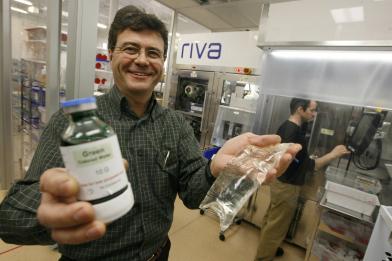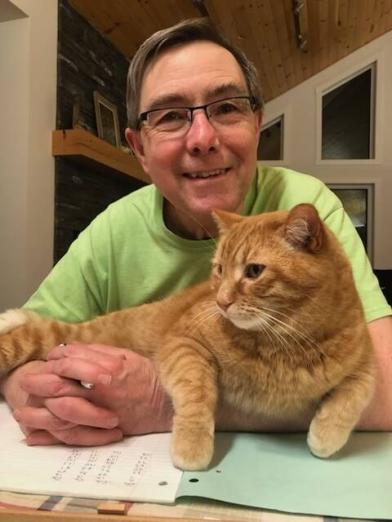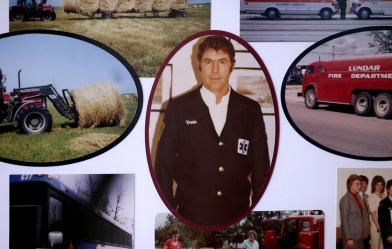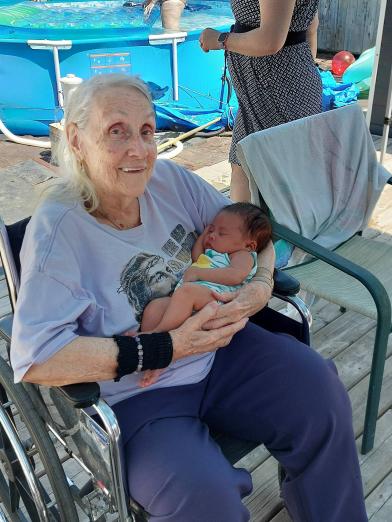A Life's Story
June 24, 2023
Bravery, joy in face of pediatric cancer
Mia Rose, 5, loved drumming, dancing, basketball, superheroes
By: Chris Rutkowski
Mia Rose wasn’t an esteemed politician, social media influencer or high-performance athlete. But she was truly a star in her own right, for her courage and acceptance of her short life.
She was only five when she died March 6, 2022.
“Mia was always happy and had a smile on her face,” her father, Peter Schultz, remembers fondly. “Even while in the hospital for treatments, you wouldn’t know she was sick.”

Supplied
Mia tried to live as normal a life as possible, going to school and playing with friends in between cancer treatments.
Except you probably would, because Mia had tubes in and on her chest to allow blood transfusions and the infusion of specialized antibiotics, and the chemo and radiation treatments made all her hair fall out.
Mia had neuroblastoma, the third-most common pediatric cancer. About 10 children per million are diagnosed with it in North America and Europe; the rate in Canada is about 75 cases per year. The overall survival rate of high-risk neuroblastoma is around 40 to 50 per cent.
Neuroblastoma usually starts as a stomach tumour. Children could have weight loss, fever, appear pale, have decreased energy, difficulty breathing, enlarged lymph nodes, bone pain, high blood pressure or even a skin rash.
Mia’s condition wasn’t discovered until she was four years old; oncologists found it had already spread and she had tumours in her back and neck.
“The doctors in the pediatric cancer unit in Children’s (Hospital) were great,” says Schultz, singling out Dr. Stacy Chapman, a pediatric hematologist and oncologist at CancerCare Manitoba.
Chapman, who is also an assistant professor in pediatrics and child health at the University of Manitoba’s Rady Faculty of Health Sciences, says Mia was courageous in the face of a serious illness, despite her young age.
“Treatment for high-risk neuroblastoma is a very long and intensive process… Children are at risk for a wide variety of treatment side effects.”
Children undergoing treatment can receive radiation therapy and often need intravenous antibiotics and a stay in hospital because of the resulting infections. When not in hospital, patients often need to be seen by a physician in a clinic to help with hydration, fevers and other complications.

Supplied
Mia (far right) with her parents Brianne Houston, Peter Schultz and siblings Marcus and Zeara.
Needless to say, this whirlwind of treatments is very hard on children and parents alike. In Mia’s case, her parents were determined to make things as normal as possible for her.
“She really wanted to go to school and be with other kids her own age,” her father says, “so in between treatments, we let her be in the classroom.”
“She would go like the dickens!” says Lorelei Bunkowsky, principal of Elwick Community School where Mia attended kindergarten.
“It’s true that you’d never know she was sick by the way she was always running around, laughing and playing so well with the other children. What’s more, she went out of her way to make friends with and support some children who were having difficulties of their own. Mia was amazing.”
Her parents’ attempt to create a sense of normality in Mia’s life extended to the hospital.
“Mia loved drumming and dancing,” says Schultz, whose background is in the Cree traditions. “We smudged with her, and we watched Indigenous music videos on YouTube with her.”
Her mother, Brianne Houston, fondly says: “I miss when Mia would jam right out when I’d play ’90s music. She would drop everything she was doing and start busting out moves.”

Supplied
SuperMia on a clinic visit
Mia loved basketball, but her prime interests were superheroes like Spider-Man and Batman.
As her illness took its toll, Mia eventually stopped eating hospital food, so her parents gave her the only thing she asked for: ice cream, which she devoured willingly.
Working with Chapman and other physicians, Mia’s parents explored all options for her treatment from chemotherapy and radiation to cannabis oil and prayer. But it was not enough.
“Pediatric palliative care requires a multi-disciplinary, holistic, family-centred approach, and is different with every family. I involve my colleagues early to ensure that the child and family have the most support possible,” Chapman says.
“This includes spiritual health, community elders, psychosocial oncology, and our child life team. We do our best to support the entire family in every way possible while caring for a child under treatment.”
The stress of caring for Mia took its toll on not just her parents, but her siblings as well.
“We had no choice. We just found a way, simply by trying to get through it day by day,” Schultz says. “It was really difficult to do it during COVID, as only one of us could visit her at a time in the cancer ward.”

Supplied
Mia in hospital early in her treatment
Now, more than a year after her death, her parents are still in the grieving process. They are dealing with depression, seeing therapists as often as possible, because “it’s even hard just getting out of bed some days.”
Having had to take a break from work and further education, Mia’s parents have not yet returned to the workforce or fully re-entered the community.
“The diagnosis of high-risk neuroblastoma itself is difficult for families to process. The realities of the intense nature of treatment only make things harder and the treatment quickly becomes an all-consuming process… The diagnosis and treatment also impact other members of the family, especially siblings,” Chapman says.
“In cases where we are unable to cure a child’s cancer, it is important to have discussions with the family, and child depending on their age, about what their goals are. Some families will want to focus on time together… Other families want to pursue clinical trials under investigation or use traditional medicines.
“We work hard to ensure all options are explored and supported with families depending on their goals.”
Mia chose to be buried with her aunties in the Brookside Cemetery.
Mia’s mother wants parents who are going through a similar situation to understand the importance of reaching out to others. “My advice… is to not be afraid to ask for help. Stay in contact with your family doctor, and find people you can talk with.”

Supplied
Mia and mom paint in her hospital room.
Meantime, Chapman offers hope for parents of children with neuroblastoma.
She and her team are part of the Children’s Oncology Group, an international collaboration facilitating research and clinical trials for all types of childhood cancer. It allows access to cutting-edge treatments and participation in research, including multiple ongoing trials to improve the survival rate of children using new and innovative treatments.
“Participating in clinical trials and completing research is an expensive endeavour, and more funding is always needed. We are lucky to have the support of CancerCare Manitoba, as well as the CancerCare Manitoba Foundation and other donors which help us fund this crucial research and trial involvement.”
passages@freepress.mb.ca
A Life's Story
December 13, 2025
Born to be wildly enthusiastic
Full-hearted family man, actor, photographer, teacher, motorcyclist lived life at full throttle
View MoreA Life's Story
December 06, 2025
A winning hand
Devoted matriarch made most of cards she was dealt
View MoreA Life's Story
November 29, 2025
She made life better for others
Accomplished artist, musician and entrepreneur who designed clothes for breast cancer patients always put others before herself
View More







